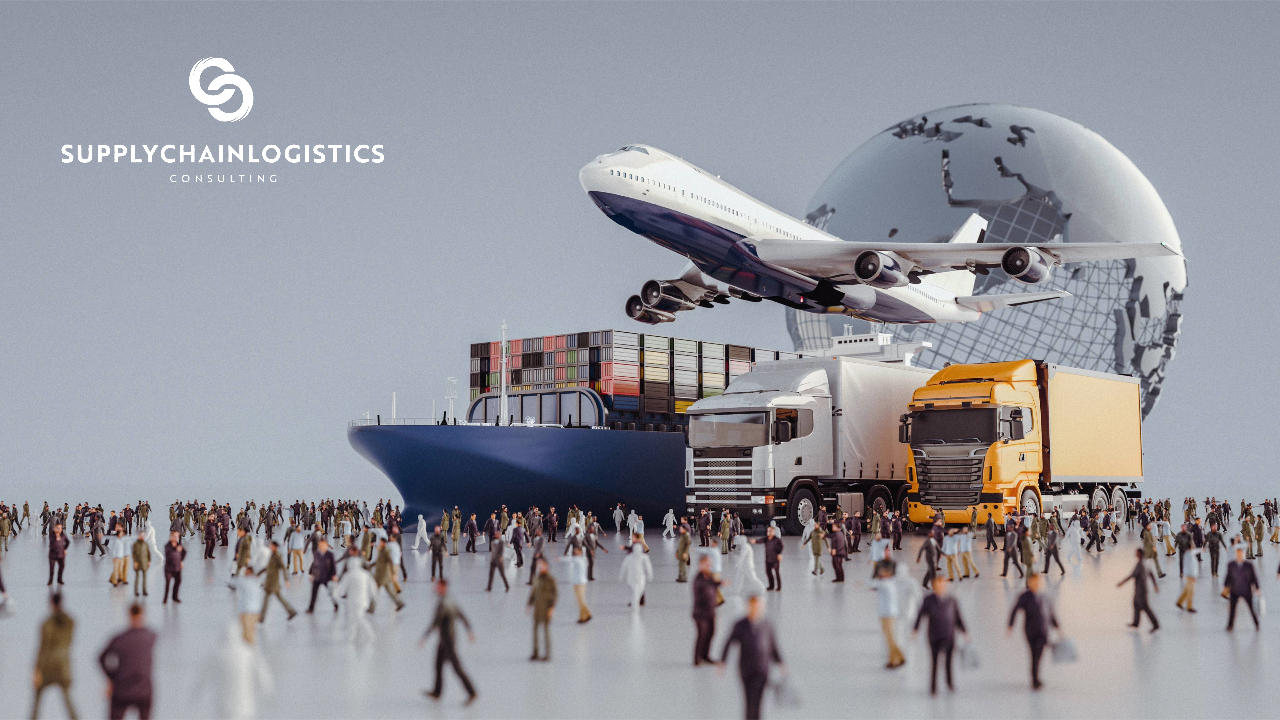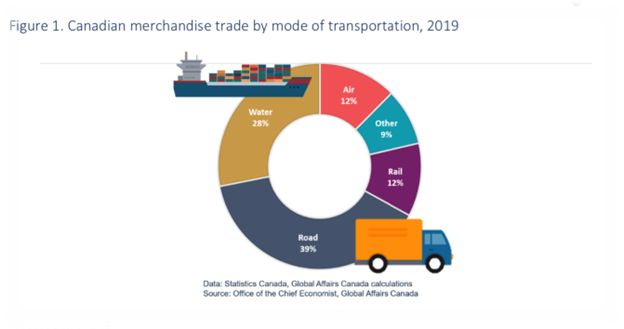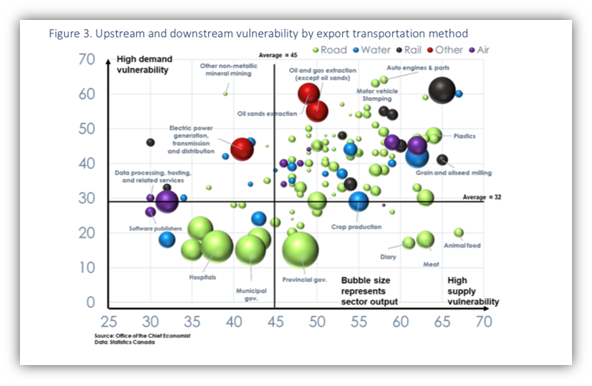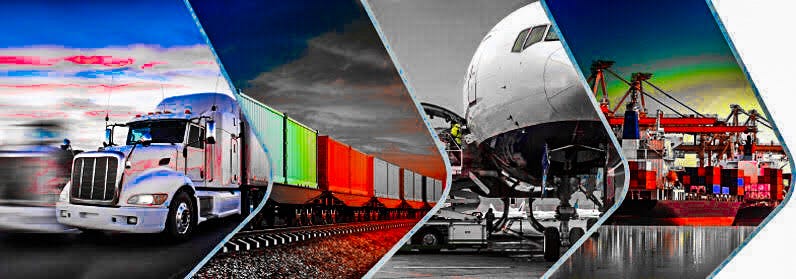Review: Canadian Transportation Services
December 4th, 2023 Authored by Hilary J. Schmitt, SCMP S&Co., Supply Chain Logistics Consulting Inc. SUBSCRIBE HERE.
In this business article, we will explore the market for transportation services in Canada, focusing on the various methods of transportation
Introduction
This informative article draws from a number of sources for information about the Canadian Transportation industry and its connection to the Canadian economy.
Sources of information that contributed to the writing of this article include a detailed and comprehensive business research paper on the status of transportation service types used in Canada. Another significant source is a Statistics Canada research project paper, which evaluates various transportation modalities, their vulnerability to various disruptive factors, which in turn, has potential to impact certain sectors of the Canadian economy.
What is the focus of this paper?
This article focuses on Canada’s transportation industry, the different modes of transportation, and the significant role of each in the nation’s economy. It looks particularly at trade with the United States, being the top recipient of Canadian exports. The information highlights that it is equally important to understand more about the challenges and opportunities within the transportation sector, to learn how disruptions, competition, and volatile profit margins have affected, and will continue to affect the domestic sector.
The findings underscore the importance of regularly performing a detailed examination of specific modes of Canadian transport, such as road, water, and air. Throughout this in-depth analysis, you will observe the predominance of road and water transportation and learn that this is largely attributed to their significant role in import and export activities within Canada.

How do I learn more?
See how various transportation modalities impact international trade and learn from the summarized details of a focal study contributing to our article, as it was conducted by Statistics Canadas’ Research Division on the Transportation sector in Canada.
Find links to more information in the references section in this article and validate the points made or learn more about how the Canadian transportation sector integrates and affects the Canadian economy.
What does this explain?
Recent studies have examined which of the various transportation modalities are most prevalent in the Canadian transportation industry, and traced their contributing factors back to a crucial role in international trade. The article looks at future trends in the sector, to understand the movement towards more vertically integrated transportation solutions, the impact of macroeconomic conditions on the sector, and the role of sustainable practices impacting the current evolution of transportation in Canada.
What is the key takeaway?
The evidence presented here points towards a promising future for transportation services in Canada, highlighting the importance of technological advancements and innovative strategies in meeting the needs of consumers and satisfying commercial demand.
Who should read this?
These insights invite you to look into Canada’s transportation services industry from a business and critical stakeholder perspective. Anyone doing business within Canada or exporting from Canada, company’s reliant on Canadian imports, and business owners seeking new opportunities in the transportation sector, would benefit from the information in this article and the supplemental readings.
The Role of the Transportation Industry in Canada
In today’s globalized economy, efficient and reliable transportation services play a crucial role in facilitating trade, enabling the movement of goods and people across vast distances. Investing in the development of the transport industry is of utmost importance for any country with a thriving economy.
The Canadian transportation industry is a vital component of the nation’s economy, as it serves to strengthen domestic and international trade by enabling the physical exchange of goods and materials with the rest of the world.
Transportation Service Types in Canada
Canadian industries primarily use road and water transportation for exporting goods. Road transportation is especially prevalent in auto manufacturing. The use of water transportation for exports is more limited and specific to certain industries. Additionally, air transportation is utilized for exporting high-value goods such as diamonds.
According to a study conducted by the research library, industries in Canada heavily rely on road and water transportation for both imports and exports.
Road: Ground Transportation
Road transportation is the leading mode of transportation, accounting for nearly 40% of overall Canadian merchandise trade. This heavy reliance on road transportation can be attributed to the significant trade between Canada and the United States, as well as the integrated global value chains between the two countries.
Ocean: Maritime Transportation
Due to its vast geography, Canada heavily relies on cargo ships to transport a significant portion of its exports and imports. This is especially crucial for goods that do not pass through the United States.
Maritime transport plays a particularly significant role in all international trade, with approximately 80% of the volume of international trade in commodities being transported by ships through seas [Source: UNCTAD]. As a result, the services provided by the industry in Canada are integral in maintaining trade connections with the rest of the world.
Disruption results in greater potential for delays, higher costs of trading, and difficulties in meeting supply and customer demand. Disruptions also expose Canadian industries to vulnerabilities, particularly those heavily reliant on roads, which are considered the most vulnerable crossings.
Furthermore, the emergence of globalization and free trade has accelerated the growth rate of marine trade, surpassing that of the global economy over the past two decades. As a result, there is a growing demand for maritime transportation services in Canada.
The increasing demand for transportation services in Canada is driven by several factors. The industry’s services have been widely accepted by downstream clients, indicating their consistency and reliability. This level of acceptance is a testament to the industry’s maturity and its ability to meet the needs of its clients in a consistently satisfactory manner.
Several indicators highlight the maturity of the transportation services market in Canada. The Canadian transportation industry is marked by fierce competition and fluctuating profit margins, which have led to the departure of many small-scale operators from the market.
Disruption in Canada’s Transportation Market
Disruption results in greater potential for delays, higher costs of trading, and difficulties in meeting supply and customer demand. Disruptions also expose Canadian industries to vulnerabilities, particularly those heavily reliant on roads, which are considered the most vulnerable crossings.
In the global market, such disruptions could lessen the competitiveness of Canadian firms as they can affect efficiency, reliability, and the overall performance of supply chains.
Challenges
The transportation services market in Canada is facing various challenges that have disrupted the industry and impacted the movement of goods.
The effects of disruption on Canadian logistics and global competitiveness in the transportation system have impacted the movement of goods, including those across the Canada – US border.
There have been disruptions in Canada’s transportation market recently. Factors such as technological advancements, changing consumer demands, rising inflation, and the impact of global events, such as the COVID-19 pandemic, and war in Ukraine, have significantly affected transportation services in the supply chain.
In Canada, labour relations disputes have had the effect of disrupting the transportation industry as strikes and work stoppages hinder the flow of goods and result in delays and increased costs for businesses.
Canada’s transportation sector has faced challenges such as increasing internal competition and volatile profit margins. These challenges have forced many small-scale operators to exit the market. Nevertheless, the transportation services market in Canada still offers numerous opportunities.
In the global market, disruptions could lessen the competitiveness of Canadian firms as they can affect efficiency, reliability, and the overall performance of supply chains.
Opportunities in Canada’s Transportation Sector
The transportation industry in Canada is not without its opportunities and challenges. With the ever-changing landscape of the transportation industry, Canadian transportation services must adapt to stay ahead of emerging trends.
Opportunities
One of the opportunities lies in the road transportation sector, which remains a dominant mode of transportation for both passengers and freight in Canada. The road transportation sector offers opportunities for growth and expansion, especially with the rising demand for e-commerce and last-mile delivery services. These solutions can offer a convenient and seamless experience for consumers by providing door-to-door delivery services for goods across national borders.
Another opportunity lies in the ocean and coastal transportation sector, which plays a crucial role in Canada’s trade connections with the rest of the world. According to market research, the industry’s services are fully and consistently accepted by downstream clients due to their importance in maintaining trade connections.
The industry also has the potential to expand into value-added transportation services such as warehousing and packaging. These value-added services can provide additional revenue streams and enhance the overall customer experience.
Another opportunity lies in the rail transportation sector, where railroads have a competitive advantage in shipping bulk freight over long distances cost-effectively and quickly.
This aligns with the trend towards providing vertically integrated solutions to shippers. This involves offering a comprehensive range of transportation services, including not just the physical movement of goods, but also warehousing, distribution, and logistics management.
Future Trends in Canadian Transportation Services
In recent years, there has been a shift towards vertically integrated solutions in the transportation industry globally. This trend is also observed in Canada, with transportation companies offering a wide range of services to cater to the diverse needs of their clients. This includes not only the physical shipment of goods but also packaging, freight forwarding, and customs brokerage.
Another important factor driving the demand for transportation services in Canada is the overall macroeconomic conditions, particularly foreign trade. As the demand for Canadian goods abroad increases, so does the need for shipping services. The industry heavily relies on the export
Furthermore, the growing importance of sustainable and environmentally friendly practices in the transportation industry opens up opportunities for innovative solutions and technologies in Canada. For example, the adoption of electric vehicles and alternative fuels can help reduce carbon emissions and make transportation services more environmentally viable.
Advancements in technology are also shaping the future of transportation services in Canada. The integration of artificial intelligence and data analytics in transportation management systems can optimize routes, reduce costs, and improve efficiency.
Conclusion:
Transportation services in Canada hold immense potential for growth and development.
The country’s diverse transportation infrastructure, strategic location, and growing demand for efficient logistics solutions create ample opportunities for businesses in the sector.
As the global economy continues to expand and trade barriers are eliminated, the demand for transportation services in Canada is expected to increase significantly. Moreover, the continued consolidation within the industry is expected to drive growth in the Canadian transportation services market.
To summarize, businesses in the transportation sector must embrace all manner of technological advancements and implement innovative strategies to meet the evolving needs of consumers and satisfy commercial demand.
Related Content:
Purchase your copy of the amazing visual maps of global transportation data in this report and more here: https://www.etsy.com/ca/shop/PythonMaps
View the Report on Canadian Supply Chain Logistics by Global Affairs Canada here https://www.international.gc.ca/trade-commerce/assets/pdfs/economist-economiste/analysis-analyse/logistics-vulnerability-en.pdf
References:
[1] M. Shirowzhan, M. Shanaki, M. H. Sebt and H. N. Toosi, “Evaluating delay factors in the construction and operation of port operational areas (case study: Shahid Rajaee port complex)”.[2] K. Jiang and C. Scarffe, “Canadian supply chain logistics vulnerability”.[3] S. McGrath, “Ocean & Coastal Transportation in Canada”.[4] M. Buchko, “Rail Transportation in Canada”.[5] M. Buchko, “Local Specialized Freight Trucking in Canada”.
Images:
Maps of Global Visual Data by PythonMaps (https://www.pythonmaps.com/); Top Left – Historic of Global Trade Routes, Bottom Left – Combined Global Ocean Shipping Routes (*red*) and International Airways (*white*), Top Right – Visual Map of Global Ocean Shipping Routes (*2022*), Bottom Right – Visual of Global Airports (*points multi-colour*) and Airways (*white*)
Chart Images (all) are from Statistics Canada Report; By K. Jiang and C. Scarffe, “Canadian supply chain logistics vulnerability”, Office of the Chief Economist, Global Affairs Canada
Other images are either licensed to, or were created by S&Co., Supply Chain Logistics Consulting Inc.
At Supply Chain Logistics Consulting our mandate is to improve the way things are done and we would be happy to hear from you. Do you have a specific problem you are solving? A unique solution or a successful story about making a significant change?
Let us know.
Write your response in the comments or send us a message on our contact page. If we get enough responses, we will be highlighting our favorite examples in featured posts so that our readers can benefit from them as well.
If you are interested in hiring a management consultant for your business or project and want to learn more about our management consulting services, please contact us today.
Supply Chain Logistics Consulting is a professional management consulting firm and we have years of experience helping people at businesses like yours to achieve results.








